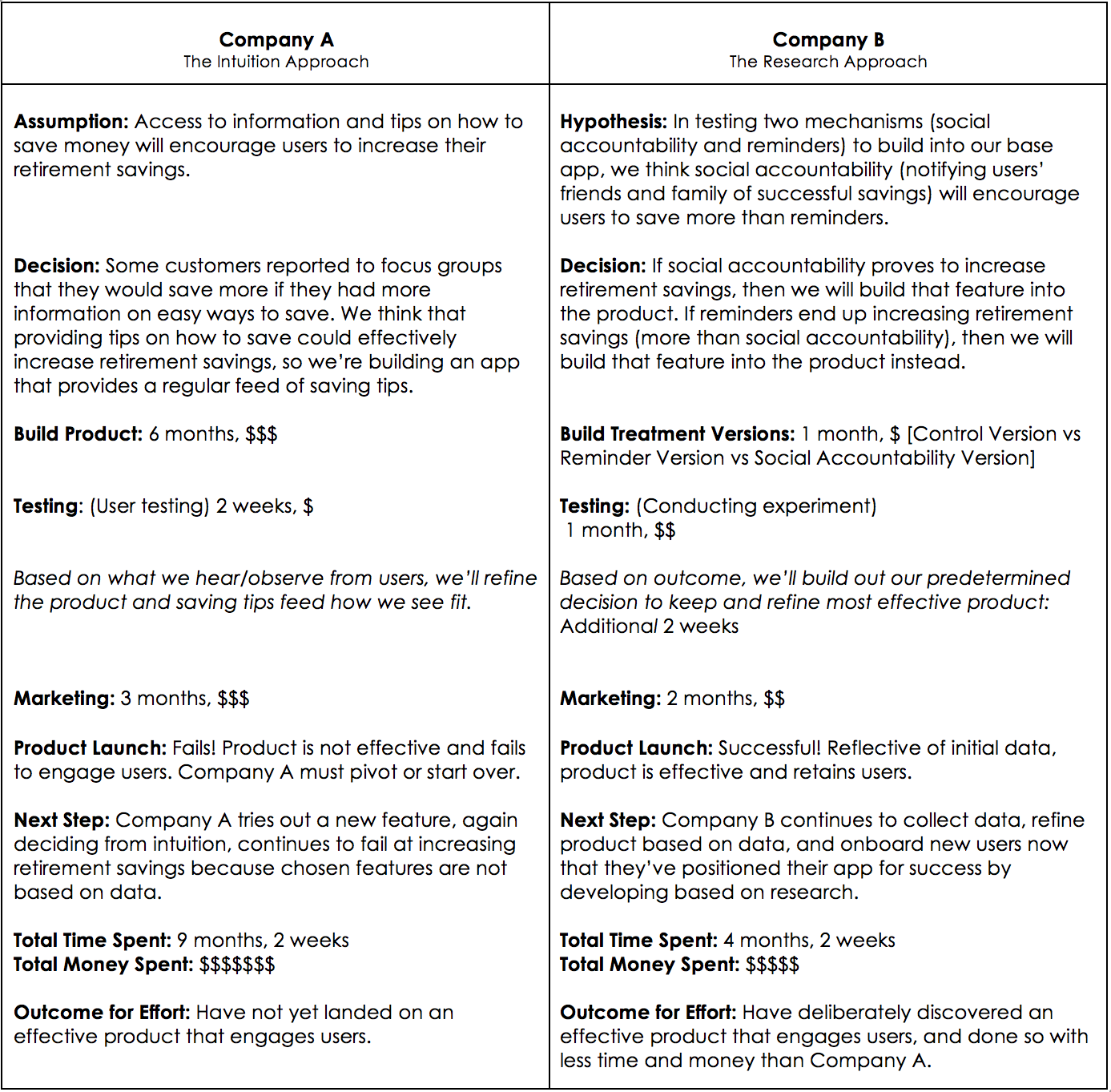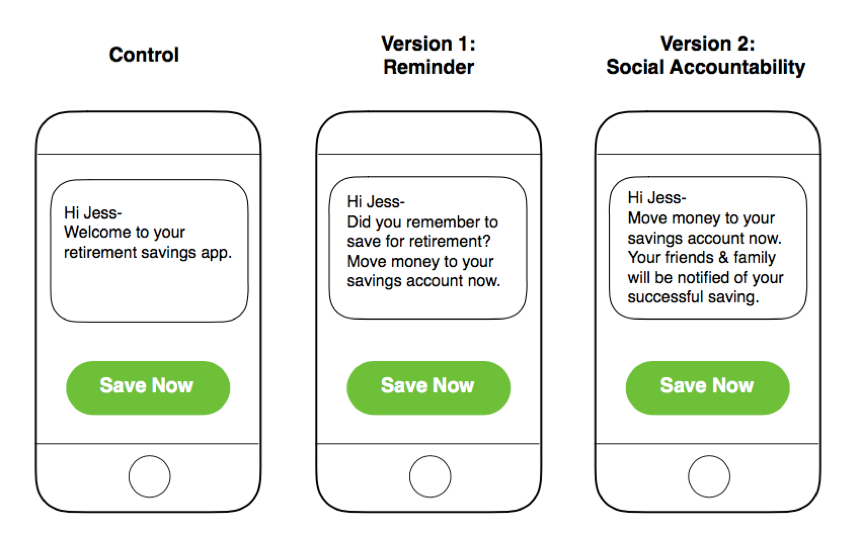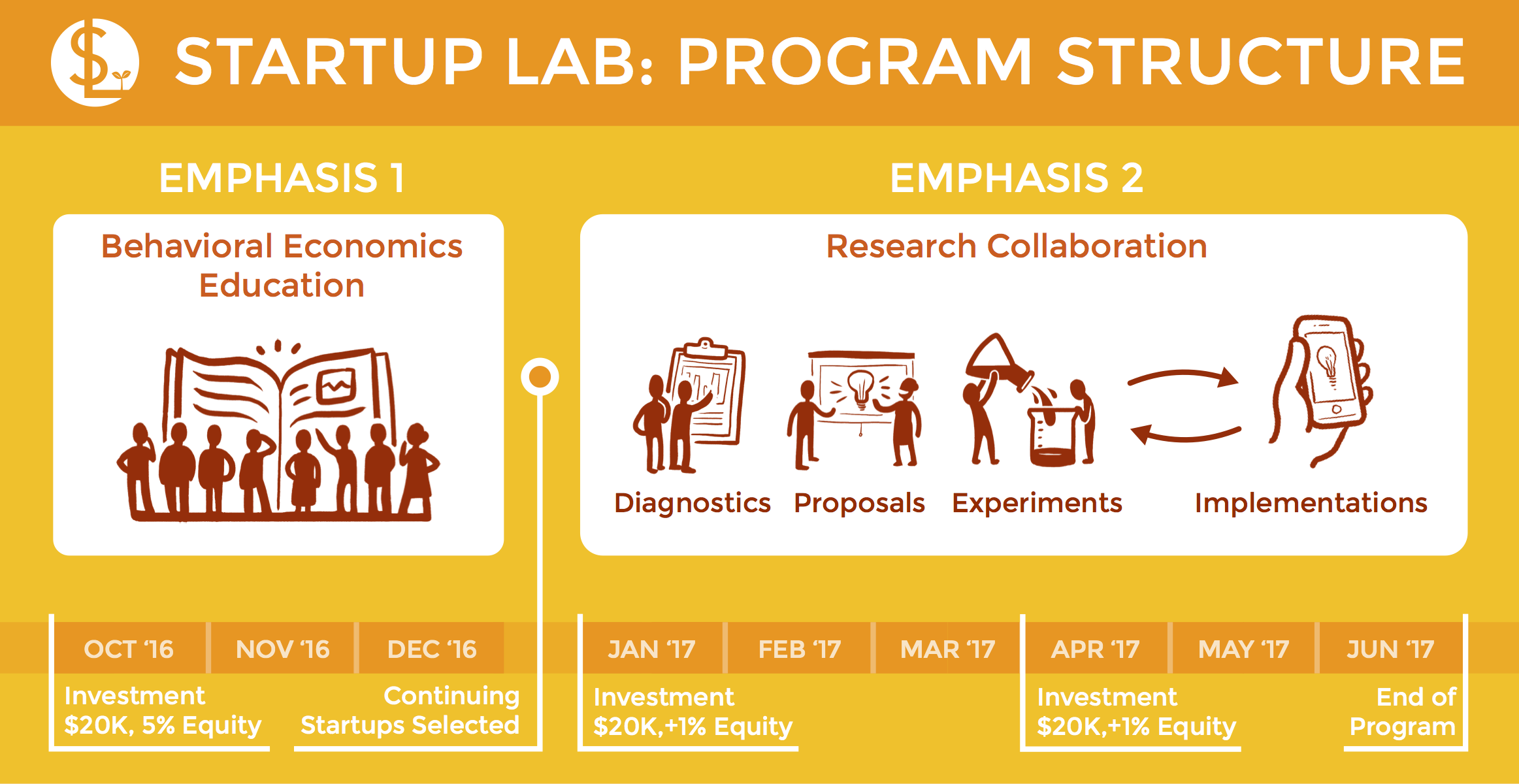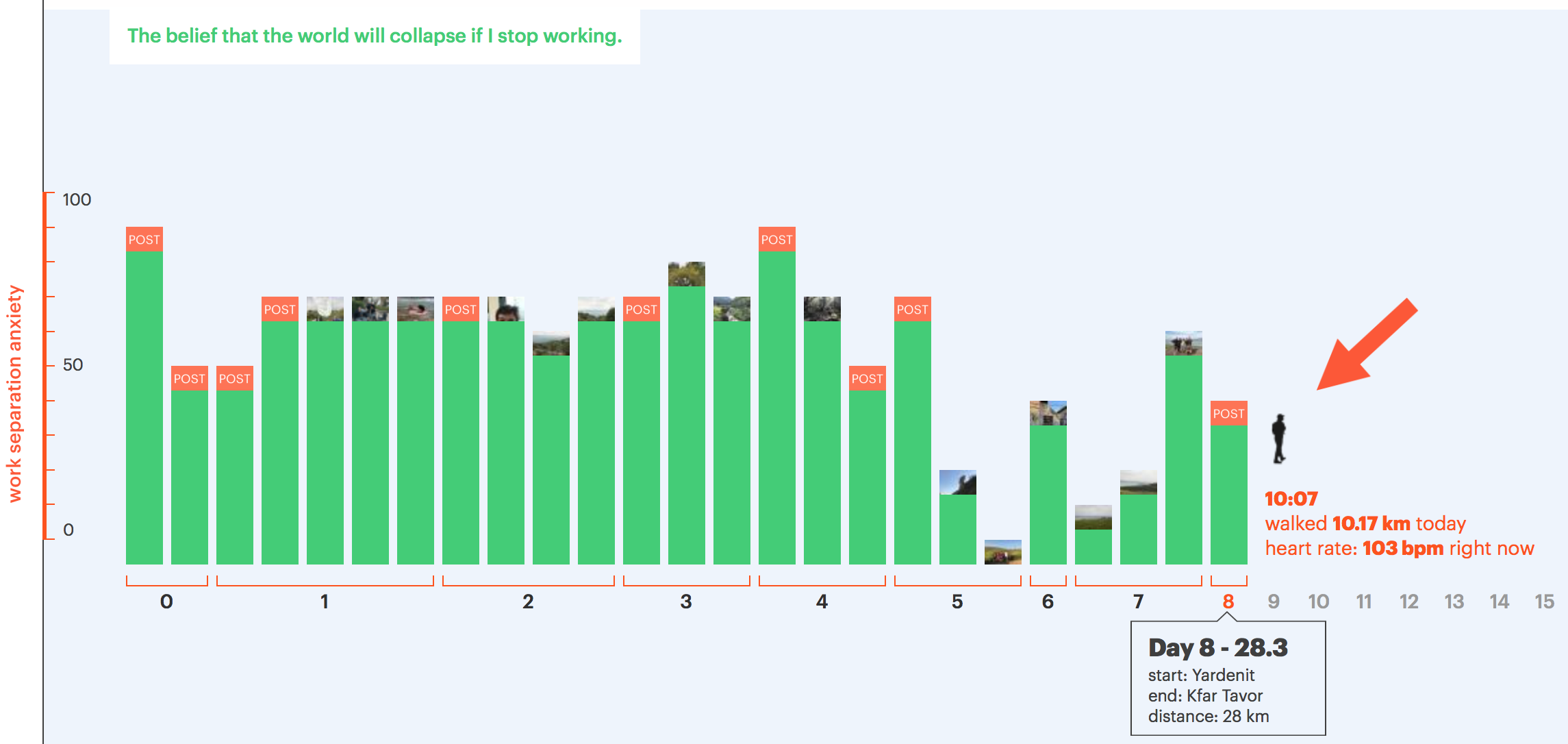Behavioral Economist Seeks Post-doc
Hello hello,
I am looking for candidates for a joint post-doctoral position, to join me at the Center for Advanced Hindsight at Duke University in Durham, NC and with my colleague Panagiotis Mitkidis at the Department of Management at Aarhus BSS in Denmark.
To learn more about the position, click here.
Then, apply here by September 25th.
How Does Pocket Ariely Make Sense of Life?
Check it out at: http://danariely.com/pocket-ariely/
Have you ever been in a situation where you could really use my help? How about putting away that last cupcake? Or saving that extra dollar for retirement? Maybe getting things done at work without draining all your time and energy? Or, maybe, you just need to spend less time giving out likes and more time nourishing your brain with food for thought?
I know I’ve felt that way, and chances are… so have you.
I want to introduce you to Pocket Ariely, a digital library of my most relevant work in behavioral economics and the best cheat sheet to life’s most difficult issues in Finance, Health, Productivity, Morality, Romance, and so much more. With Pocket Ariely, you can access videos, podcasts, articles, and even games that will prepare you to make sense of life through social science insights.
What’s more, all profits from Pocket Ariely will be put toward the research being conducted at my lab, the Center for Advanced Hindsight at Duke University. With your help, we will continue to advance the blossoming field of behavioral economics and continue the process of showing the world how irrational humans can be (sometimes), and ways to fix it.
The app is not free, but think about the monthly (weekly? daily?) $5 you spend on a Venti Caramel Macchiato at Starbucks, and skip one every other month in the name of science (your waistline will thank you too!). I promise you that we will keep working hard on some of humanity’s most pressing issues all for the cost of the occasional cup of Joe. Not a bad deal huh?
Download Pocket Ariely now
from the App Store and Google Play Store.
Irrationally yours,
Dan
Beginning at the End
Part of the CAH Startup Lab Experimenting in Business Series
By Rachael Meleney and Aline Holzwarth
Missteps in business are costly—they drain time, energy, and money. Of course, business leaders never start a project with the intention to fail—whether it’s implementing a new program, launching a new technology, or trying a new marketing campaign. Yet, new ventures are at risk of floundering if not properly approached—that is, making evidence-based decisions rather than relying on intuition.
Let’s say your company is in the business of connecting consumers to savings accounts, helping them save for retirement through your app. You need to decide how your product will achieve this. Let’s look at how an intuition-backed approach (Company A) compares to a research-backed approach (Company B) in this scenario:

What if there was a way to more reliably ensure that business risks weren’t as prone to failure? As we see in the example above, the solution lies in well-planned experimentation.
If businesses can learn to identify concrete decisions needed to move new or existing projects forward, and set up experiments that directly inform those decisions, then much of the painful time, energy, and monetary costs of mistakes can be avoided. However, many business leaders and entrepreneurs are weary and unsure about how to leverage research to benefit their companies most effectively. Therefore, they rely (perhaps unknowingly) on riskier decision-making approaches.
As social scientists at Dan Ariely’s Center for Advanced Hindsight at Duke University, we’re in the business of human behavior and decision-making. We see in our research the effects that our biases and environments have on our ability to make optimal decisions. In the high-risk environment of building a company, founders aren’t well-served by calling shots based on gut feelings or reasoning plagued by cognitive biases. (Don’t feel bad! We’re only human!)
The better route? Rigorous experimentation. Asking well-formed research questions, designing tests with isolated variables and control groups, randomizing users to groups, and using data to inform business decisions.
Adapting the Process: Making Experimental Results Actionable
At the Center for Advanced Hindsight’s Startup Lab (our academic incubator for health and finance technologies), our mission is to equip startups with the tools to make business decisions firmly grounded in research.
But the research process has to be more accessible to businesses. Entrepreneurs often come to us excited about research, but with little to no idea of what it takes to execute a rigorous experiment. There’s a lot of anguish, confusion, and hesitation about where to even begin.
The Startup Lab makes experimentation more approachable to entrepreneurs who have the will, but often not the time and resources to run studies like our colleagues in academia.
There are specific considerations that businesses take into account when wading into the world of research. An important one is what makes investing in experimentation worthwhile? The driving purpose of running experiments, in most business contexts, is to uncover results that are clearly actionable.
So how do you ensure actionable results? You set up your process with this goal in mind from the start – not as an afterthought. The Startup Lab adapts Alan R. Andreasen’s concept of “backward market research”[1] to bring the process of planning and executing a research project to entrepreneurs.
The ‘Backward’ Approach: Beginning at the End
“Beginning at the end” means that you determine what decision you’ll make when you know the results of your research, first, and let that dictate what data you need to collect and what your results need to look like in order to make that decision.
This ‘backward’ planning is not how businesses usually approach research projects. The typical approach to research is to start with a problem. In business, this often leads to identifying a lot of vague unknowns—a “broad area of ignorance” as Andreasen calls it—and leaves a loosely defined goal of simply reducing ignorance. For example, startups often come to us with the goal of better understanding their customers. While we commend this noble goal, we ask, “to what end?”
What business decision will you make based on what your research uncovers?
The problem with the simple exploratory approach is that it sets you up for certain failure from the start. An unclear question produces an unclear answer. You’ll end up with data that you can’t possibly base a concrete decision on.
Let’s revisit the example of Company A (the intuition-based entrepreneurs) and Company B (their ‘backward market research’ counterparts). If you approach product development based on intuition like Company A, then you may be tempted to ask your customers about the challenges they have saving, or their ideal income at retirement – but this would be misguided if you don’t first determine what you will do with this information. If you find that your customers have trouble saving, you might conclude that you need to give them more information about the benefits of saving for retirement. If you create and implement this content into your app only to discover that it is completely ineffective at increasing savings, will you trash your product and start over? (Probably not. But if you set up your research in this way, then that may be the only logical conclusion.)

But imagine that instead, like Company B, you plan a research project to collect data on your users’ saving behavior (instead of probing to reduce your ignorance on their stated savings challenges). You set up an experiment to test two different ways of encouraging users to save (your two treatment groups, reminders and social accountability) against the current version of your product (what we call a control group).
Now you’ve set up an experiment, but you can’t stop at designing your research.
The “backward market research” approach forces you to specify which decisions you will make based on the outcome.
If the social accountability version leads your users to save twice as much as they do when using your base product, will you implement this mechanism in your product strategy? How will you do so, and what might the implications be? Once you determine 1.) The decision you will make from every possible outcome of your research results and 2.) How each decision will be implemented, then your research is set up to lead to actionable insights that have the power to move your business forward.
P.S. You too can design and conduct experiments using the ‘backward market research’ method. Use our handy tool to guide you through the backward approach: ‘Beginning at the End’ Worksheet.
And remember, to orient your research toward actionable decisions, start with the end in mind.
[1] Andreasen, A. R. (1985). ‘Backward’Market Research. Harvard Business Review, 63(3), 176-182.
At the Center for Advanced Hindsight’s Startup Lab, our academic incubator for health and finance tech solutions, we aim to instill a commitment to research-backed business decisions in the companies we bring into our fold. We will be releasing more articles and tools like this as part of our Experimenting in Business Series on our blog. Leveraging research for smart business decisions is a powerful skill—we’re aiming to make rigorous experimenting less intimidating and more accessible to a broad range of businesses.
By the way—we’re also accepting applications for the Startup Lab’s upcoming program, which starts in October. We’re looking for startups that are eager to experiment, and demonstrate a passion for building research-backed solutions to health and finance challenges.
APPLY NOW.
You only have until June 30th at 5pm EST.
Build better health and finance tech products for humans. Join the Startup Lab.
We’re excited to announce that we’re searching for our next class of the Startup Lab, which begins October 2017. Applications are only open until June 30th at 5pm EST.
Apply to the Startup Lab now.
Our academic incubator supports problem-solvers by making behavioral economics findings accessible and applicable. See how behavioral researchers and entrepreneurs work together at the Center for Advanced Hindsight:
The Startup Lab provides:
- Ability to explore behavioral economics and learn how to leverage findings for your startup
- Opportunity to collaborate with world-renowned behavioral researchers
- Guidance and resources to run rigorous experiments
- Office space in downtown Durham, NC up to 9 months (October-June)
- Investment up to $60k
Are you insatiably curious about what drives decisions, shapes motivation, and influences behavior? Does your startup’s success hinge on the ability to affect positive behavior change that helps people live happier, healthier, and wealthier lives?
We’re looking for startups that are eager to experiment, and demonstrate a passion for building research-backed solutions to health and finance challenges.
APPLY NOW.
You only have until June 30th at 5pm EST.
To learn more, visit our FAQs (includes information on the Startup Lab investment structure and other logistics) or connect with us at startup@danariely.com.
Birthday Gifts
My 50th is getting closer and closer (April 29th) and because a few people have asked me over the past few days what I want for my birthday, I am walking while wondering about what makes a good gift. There are a few obvious ways to think about good gifts. Good gifts should be experiences and not things. Good gifts should be memorable. Good gifts should be unique. Good gifts should increase the social bond between the giver and the receiver. Good gifts are things that the receiver wants, but is not willing to buy for themselves. Good gifts are things that would make the receiver happy, but they don’t realize that it will.
But what are some good examples of good gifts? Headphones, Pens? Culinary classes? I would love to get examples of good gifts that you either gave or received.
And what gifts did I ask from my friends this year? I asked them not to give me anything, but I also told them that if they feel that they have to give me something, I want a copy of one of their favorite book, with an explanation why they love this book so much. And I am looking forward to having this shelf of books and reading it over the next few years.
Hiking the Israel National Trail
I’m just starting the second week of my month-long hike, and have been tracking some things along the way:
- Light Happiness
- Deep Happiness
- Love
- Optimism
- Regret
- Empathy
- Loving Nature
- Work Separation Anxiety
- Communication Anxiety
So far, I appear to be pretty stable on most dimensions (light happiness has taken a few dips but deep happiness is consistently high, and love/optimism/loving nature have remained high), but I’m most noticeably experiencing a downward trend on work separation anxiety. The more time I spend hiking, the less I am worrying about the growing list of tasks that would otherwise keep me up at night. It took a few days for me to get here, but my work is now taking a back seat to the importance of this trip.
I decided to embark on this adventure as an acknowledgement of my upcoming 50th birthday, and as an opportunity to reflect on life and how I want to spend the rest of it.
You can follow my journey at http://danarielyishikingtheint.com and see how the next few weeks pan out!
Irrationally Yours,
Dan Ariely
Email Notifications
How many of our emails should we know about the moment someone decides to email us?
205 billion. That’s the number of emails we sent and received in 2015, and that number is expected to grow to 246 billion by 2019.[1] What does this mean for most of us? A steady stream of new messages coming into our inboxes throughout the day. And for most of us, it seems to be a norm to keep our inboxes open throughout the work day. We focus on the tasks we have at hand, and each “ping” from our inbox draws our attention, even if briefly, before we return back to our work.
The problem here is the high cost of interruption. This cost includes three categories: 1) time cost 2) performance cost 3) stress/ emotional well-being.
Time Cost In terms of time cost, researches have shown that any switching between tasks results in a loss of time. In other words, “multi-tasking” is a misnomer – we aren’t actually doing two tasks at once. We are doing one task, switching to the other, and then switching to the original task. One study showed that after switching tasks, it took an average of 23 minutes and 15 seconds for people to get back to their original task.[2]
Performance Cost It should be no surprise to us that distraction can cause reductions in cognitive performance. In psychological terms, “task-irrelevant thoughts,” that is – thoughts that are unrelated to the task at hand, have indeed been shown to have deleterious effects on performance.[3]
A recent study published in The Journal of Experimental Psychology illustrates how this plays out for cell phones in particular, focusing on the distraction that cell phone notifications can create. In this study, participants were tasked with completing a task involving seeing items and pressing a button every time the item was a digit from 1-9, unless it was the number 3. Some were interrupted with notifications and others were not. The study found that the notification groups were more likely to make errors than the no-interruption group.
Stress/Emotional Well-Being A third factor to consider with interruptions is the effect they have on people’s well being. Task switching is fatiguing for us; it depletes us. One study showed that interruptions resulted in higher feelings of stress, pressure and effort.[4]
At this point, it should be painfully clear to us that we need to be worried about the interruptions-economy. What value interruptions provide, under what conditions, and what are their costs? A little ping may seem innocuous, but there is cumulating evidence that the cost of an interruption is higher than we realize, and of course given the sheer number of interruptions, their combined effect can very quickly become substantial.
If email interruptions can have all these negative effects, what can we do to reduce them? The first thing we should question is this idea that all emails are created equal. Should each email be able to interrupt people? Is the email from someone’s boss as important as the weekly industry newsletter he’s signed up for? What if we designed a different system in which emails were not treated equally?
In a previous study, we looked at how many emails truly are worthy of interruption. We asked people to look at the last 40 emails they received and asked them how soon they really needed to have seen each email. Immediately? At some point today? At some point this week? At some point this month? No need to see it at all?
As it turns out, very few – only 12%! – of emails need to be seen within 5 minutes of being sent.
7% of emails need to be seen within 1 hour, 4% within 4 hours, 17% by the end of the day, 10% by the end of the week, 15% at some point, and a whopping 34% fell into the “no need to see it” category.
With that initial starting point – the idea that very few emails need to be seen right away – we set out to build a tool to allow people create rules for receiving emails. We used a very simple sorting technique: sorting emails based on the sender. In other words, depending on the sender, emails could be set to be received at different intervals. No complex AI or learning mechanisms.
Example of instructions users were given
Example of prompt to set rule by each sender
What did we find? People proceeded to create rules based on senders. Similar to our initial findings, only 23% of emails were set up to be in the “immediate” category. 10% were relegated to the every-4-hours category, 19% to the end of the day, 16% to the end of the week, 5% to some day and a whopping 27% to the “never” category.
We also looked at whether people who received high vs, low quantities of emails behaved differently. While on the whole they had similar behavior, one interesting point of note is that people with 50+ emails/day put highest number of emails into “immediately bucket” (30%) vs. 10-49 emails/day (20%) and <10 emails/day (26%).
Overall, the key point and opportunity we should take away from all of this is that a very simple mechanism can have an impact, creating a significant amount of benefit for people. If you’d like to try this app for improving your email process for yourself, you can download it here.
[1] http://www.radicati.com/wp/wp-content/uploads/2015/02/Email-Statistics-Report-2015-2019-Executive-Summary.pdf
[2] Mark, G., Gudith, D., & Klocke, U. (2008). The cost of interrupted work: More speed and stress. Paper presented at the 107-110. doi:10.1145/1357054.1357072
[3] Smallwood, J., & Schooler, J. W. (2006). The restless mind. Psychological Bulletin, 132, 946–958. http://dx.doi.org/10.1037/0033-2909.132.6.946
[4] Mark, G., Gudith, D., & Klocke, U. (2008). The cost of interrupted work: More speed and stress. Paper presented at the 107-110. doi:10.1145/1357054.1357072
The Trust Factory
Hey everyone, I hope this blog post finds you well. Recently, I wrote a short paper about trust….
The paper, Trust Factory, discusses elements of trust; specifically regarding the way organizations can interact with individuals to build trust. If you’re interested in reading the paper, you can view this link.
The paper talks about how humans tend to trust one another. But does it work the same way when it comes to trusting organizations?
A community of trust is required to survive. That’s what trust is based on.
Understanding that, what can organizations do to gain the trust of their consumers/users? I outline five key tools that allow us to trust each other: long-term relationships, transparency, intentionality, revenge and aligned incentives.
View the paper by clicking on this link.
Trustfully yours,
Dan
A Survey about Spending
As spending money becomes easier (think of credit cards, Apple Pay, and Google Wallet, among others), we have more opportunities to spend our money well, and to spend it not so well. In collaboration with Qapital, we have made a survey to learn about what kinds of purchases people feel good about, and what kinds they regret. Note that this link and survey is secured by the highest possible internet and bank standards.
Please help us by participating in this short study and reflecting on your past transactions. We will randomly choose some participants to get the chance to have a 30-minute chat with me. You have our immense gratitude.
Click on the following link to begin: https://duke.qualtrics.com/SE/?SID=SV_bNNOX3E1I4HLI2h
Now Accepting Startup Lab Applications
 The Center for Advanced Hindsight at Duke is now accepting applications for its second cohort of the Startup Lab, which begins October 2016.
The Center for Advanced Hindsight at Duke is now accepting applications for its second cohort of the Startup Lab, which begins October 2016.
Health and Finance startups with a keen interest in applying behavioral insights to their products and exploring original research opportunities in collaboration with our world-class researchers are invited to apply.
We are looking for startup teams of 2-4 who are willing and able to be in Durham, NC for the duration of the program (October 2016-June 2017).
For details on the Startup Lab’s timeline, structure, and investment model, click here and check out the illustration below.

Strong applicants are health or finance startups committed to changing behavior for good. We are looking for teams who are passionate in their pursuit of well-researched solutions and validation through experimentation. We want to partner with teams who are intensely interested in learning more about behavioral economics and who see the implementation of behavioral insights into their product as being vital to their success.
Have we found each other? Apply for the Startup Lab here by Sunday, July 3, 2016 at 11pm EST.
 Tweet
Tweet  Like
Like 



